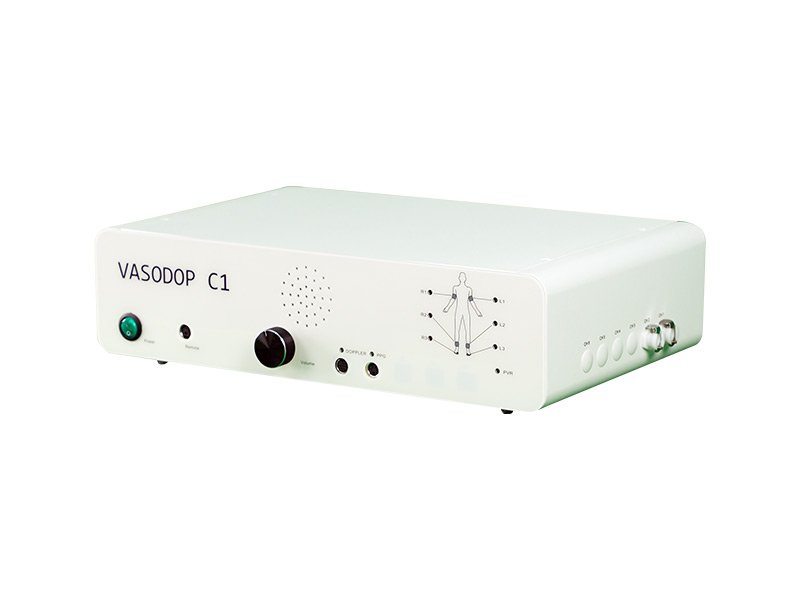C1
The device uses bidirectional Doppler, pulse volume recording (PVR), photoplethysmography (PPG), segmental pressure and other detection methods to perform non-invasive examination of peripheral blood vessels throughout the body.
Technical features:
Equipped with one independent PPG port and one dual-purpose PPG probe for both arterial and venous functions.
Equipped with a 2-channel cuff selection device and an automatic inflation and deflation system, it can automatically measure dual channel blood pressure synchronously.
Clinical issues
Peripheral arterial disease (PAD) is a vascular disease characterized by arterial stenosis caused by plaque accumulation, mainly occurring in the legs. It is a silent threat that is usually not discovered until late stages, and in severe cases can lead to heart attacks, strokes, amputations, and even death.
Solution
According to guidelines released by organizations such as the International Society of Vascular Ultrasound, Doppler is the gold standard for vascular ABI measurement, and photoplethysmography (PPG) is recognized as the most effective TBI measurement method. VASODOP innovatively adopts these technologies, combining the accuracy of Doppler with the convenience of computer automation. The VASODOP vascular detection system is highly suitable for medical professionals who prioritize accurate diagnosis without compromising convenience and usability.
VASODOP adopts various advanced measurement methods, including Doppler, PVR, PPG, and segment pressure, and seamlessly integrates these methods into the detection process to achieve rapid and accurate evaluation. VASODOP is a transformative PAD testing tool that meets the personalized testing needs of hospitals and helps doctors quickly and accurately diagnose patients' arterial and venous diseases.
Testing items
Routine examinations: Ankle Arm Index (ABI), Exercise ABI, Toe Arm Index (TBI), Segmental Blood Pressure (SBP), Doppler Measurement (DOP), Pulse Volume Recorder (PVR), Photocapacitance Product (PPG).
Specific functional tests: venous return, maximum venous outflow (MVO/SVC), pulse wave velocity (PWV), penile function/erectile dysfunction, extracranial examination, Reynaud's syndrome, thoracic outlet syndrome.
Sports ABI: The PPG method can quickly, automatically, and continuously measure ankle blood pressure, analyze changes in blood flow and ABI during rest, stress exercise, and recovery periods in patients.
Segmental blood pressure: Multiple sizes of cuffs, configurable detection solutions. Support automated measurement of multi segment pressure in upper and lower limbs to quickly locate the location of vascular blockages.
Pulse wave velocity: Synchronized and stable cuff pressure conduction, accurately recording the pulse wave variation curve of the upper and lower limbs during the same cardiac cycle, used to calculate pulse wave velocity (PWV).
Venous reflux test: Bilateral venous reflux test, used to determine lower limb venous valve dysfunction. By conducting pressure band experiments, the location of venous thrombosis can be determined.
Penile blood flow ultrasound: sensitive Doppler can detect small penile blood flow, PPG combined with cuff can measure penile blood pressure, and calculate the shaft brachial index (PBI). Identify and diagnose vascular causes of erectile dysfunction/impotence.
Customization: Customize blood vessel detection schemes for various parts of the body.





